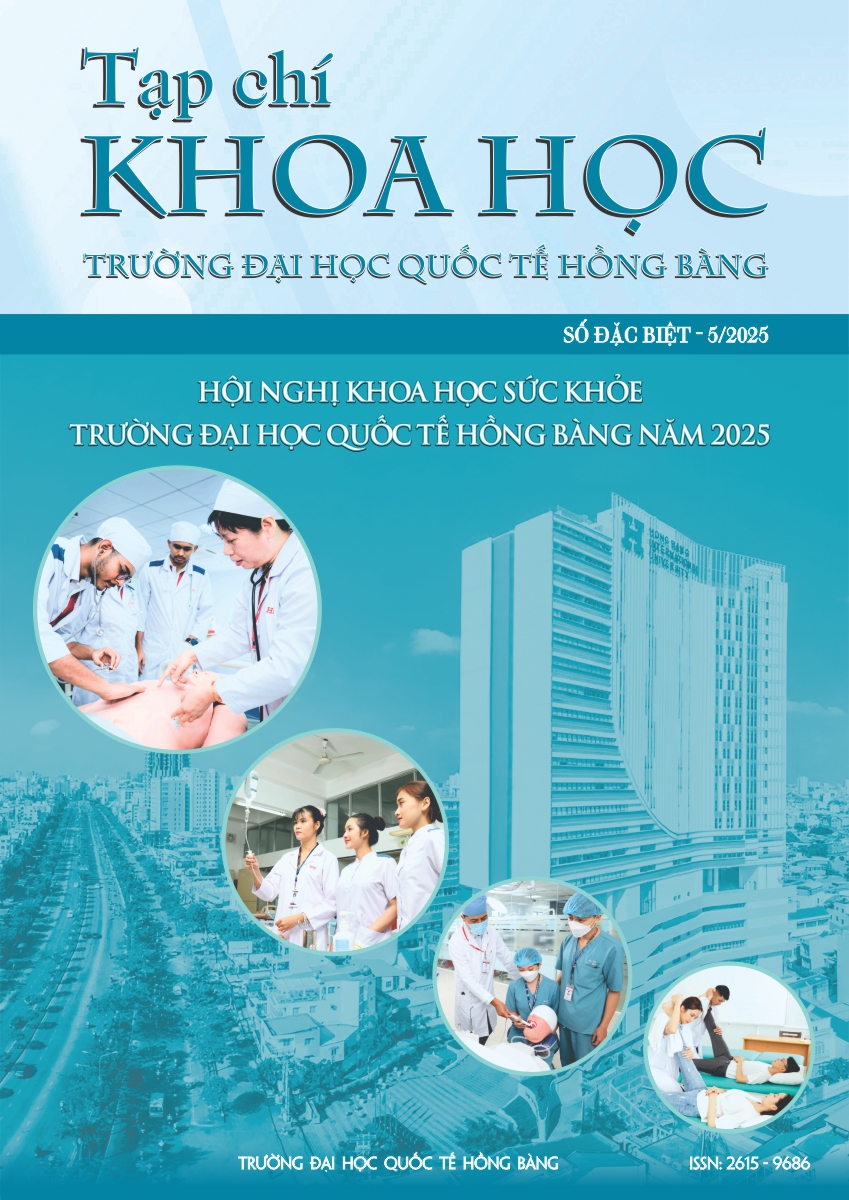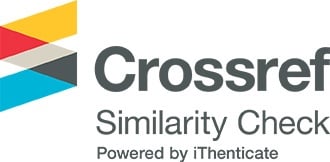TÁC DỤNG GIẢM ĐAU CỦA CAO CHIẾT TỪ LÁ CÂY NỌC XOÀI (Struchium sparganophorum (L.) Kuntze.)
Các tác giả
DOI: https://doi.org/10.59294/HIUJS.KHSK.2025.018Từ khóa:
Struchium sparganophorum (L.) Kuntze, độc tính cấp đường uống, đau xoắn bụng bằng acid acetic, thực nghiệm mâm nóngTóm tắt
Đặt vấn đề: Lá cây Nọc xoài (Struchium sparganophorum (L.) Kuntze) được sử dụng làm giảm đau do sưng viêm theo kinh nghiệm dân gian. Tuy nhiên, tại Việt Nam chưa có nghiên cứu về tác dụng dược lý của Nọc xoài. Mục tiêu nghiên cứu: Đánh giá tác dụng giảm đau của các cao chiết ethanol 45% và 70% từ lá Nọc xoài trên chuột nhắt trắng. Phương pháp nghiên cứu: Xác định tính an toàn của các cao chiết qua khảo sát độc tính cấp đường uống. Tác dụng giảm đau được đánh giá trên các thực nghiệm gây đau xoắn bụng bằng acid acetic và đau do kích thích nhiệt (mâm nóng) ở các liều cao chiết tương đương khoảng 2.5 g và 5 g dược liệu khô/kg trọng lượng chuột. Kết quả: Các cao chiết từ lá Nọc xoài không thể hiện độc tính cấp đường uống ở liều 10 g/kg. Cao chiết ethanol 45% (liều 0.64 g/kg và 1.28 g/kg) hoặc cao chiết ethanol 70% (liều 0.57 g/kg và 1.13 g/kg) làm giảm số lần xoắn bụng của chuột hoặc kéo dài thời gian phản ứng của chuột với nhiệt. Tác dụng giảm đau của các cao chiết yếu hơn so với các thuốc đối chiếu diclofenac hoặc morphin. Kết luận: Cao chiết ethanol từ lá Nọc xoài thể hiện tác dụng giảm đau trên các thực nghiệm gây đau, cho thấy tiềm năng của nguyên liệu này trong hỗ trợ kiểm soát đau.
Abstract
Background: Struchium sparganophorum (L.) Kuntze has been used in folk experience for pain relief. However, there have been no studies to scientifically validate the pharmacological effects of this plant in Vietnam. Objectives: To evaluate the analgesic effect of ethanolic extracts (45% and 70%) from S. sparganophorum leaves in mouse pain models. Methods: The safety of the extracts was determined by acute oral toxicity test. The analgesic effect was evaluated by using acetic acid-induced writhing and hot plate tests at test doses equivalent to 2.5 g and 5 g of dry materials/kg mouse body weight. Results: The ethanolic extracts from S. sparganophorum leaves exhibited no signs of acute oral toxicity at a dose of 10 g/kg. The 45% ethanolic extract (at doses of 0.64 g/kg and 1.28 g/kg) and the 70% ethanolic extract (at doses of 0.57 g/kg and 1.13 g/kg) significantly reduced the number of writhing responses in mice and prolonged their reaction time to thermal stimuli in hot plate test. However, the analgesic effect of the extracts was weaker than that of diclofenac or morphine. Conclusion: The ethanolic extracts of S. sparganophorum leaves exhibited analgesic effects in mouse pain models, suggesting its potential support for pain management.
Tài liệu tham khảo
[1] M. F. Yam, Y. C. Loh, C. W. Oo, R. Basir, “Overview of Neurological Mechanism of Pain Profile Used for Animal “Pain-Like” Behavioral Study with Proposed Analgesic Pathways”, International Journal of Molecular Sciences, vol. 21, p. 4355, 2020.
DOI: https://doi.org/10.3390/ijms21124355[2] Tracuuduoclieu.vn, "Struchium sparganophorum (L.) Kuntze - Nọc xoài, Cây sọ khỉ", Tracuuduoclieu.vn. [Truy cập: 29/04/2025]. [Online]. Available: https://tracuuduoclieu.vn/struchium-sparganophorum-l-kuntze.html
[3] B. Y tế, “Hướng dẫn thử nghiệm tiền lâm sàng và lâm sàng thuốc đông y, thuốc từ dược liệu” theo Quyết định 141/QĐ-K2ĐT, ngày 27/10/2015.
[4] R. C. Hubrecht and E. Carter “The 3Rs and Humane Experimental Technique: Implementing Change”, Animals (Basel), vol. 9, no. 10, p.754, 2019.
DOI: https://doi.org/10.3390/ani9100754[5] Đ. T. Đàm, “Phương pháp xác định độc tính cấp của thuốc”, NXB Y học, Hà Nội, 2014.
[6] N. T. T. Huong, B. T. Q. Chi, C. D. Khoi, N. M. Linh, T. H. K. Han, “Antinociceptive and anti-hyperuricemic effects of ethanolic extract from Homalomena pierreana Engl., Araceae”, Hong Bang International University Journal of Science, vol. 6-6/2024: I-II, pp. 51-58, 2024.
DOI: https://doi.org/10.59294/HIUJS.VOL.6.2024.629[7] Đ. T. Đàm, “Thuốc giảm đau chống viêm và các phương pháp nghiên cứu tác dụng dược lý”, Nhà xuất bản Y học, pp. 335-526, 2017.
[8] G. Oboh, “Nutritive value, Antioxidant and Antimicrobial properties of Struchium sparganophora leaves”, Journal of Medicinal Food, vol. 9, no. 2, pp. 276-280, 2006.
DOI: https://doi.org/10.1089/jmf.2006.9.276[9] B. Tan, X. Wu, J. Yu, Z. Chen, “The Role of Saponins in the Treatment of Neuropathic Pain”, Molecules, vol. 27, no.12, p. 3956, 2022.
DOI: https://doi.org/10.3390/molecules27123956[10] C. R. Ferraz, T. T. Carvalho, M. F Manchope, N. A. Artero, F. S. Rasquel-Oliveira, V. Fattori, R. Casagrande, W. A. Verri Jr, “Therapeutic Potential of Flavonoids in Pain and Inflammation: Mechanisms of Action, Pre-Clinical and Clinical Data, and Pharmaceutical Development”, Molecules, vol. 25, no. 3, p. 762, 2020.
DOI: https://doi.org/10.3390/molecules25030762[11] C. Zhu, N. Liu, M. Tian, L. Ma, J. Yang, X. Lan, H. Ma, J. Niu, J. Yu, “Effects of alkaloids on peripheral neuropathic pain: a review”, Chinese Medicine, vol.15, p.106, 2020.
DOI: https://doi.org/10.1186/s13020-020-00387-x[12] A. Francis, P. P. Bijeshmon, K. Meera Mohan, K. M. Greeshma, and A. M. Sabeena, “Phytochemical characterization, microscopic evaluation, and TLC profiling of Struchium sparganophorum (L.) Kuntze: A comprehensive pharmacognostic study,” International Journal of Pharmacognosy and Phytochemical Research, vol. 9, no. 10, pp. 16-20, 2024.
[13] S. O. Salawu, D. M. Sanni, A. A. Akindahunsi, “HPLC/DAD/MS phenolic profile, antioxidant activities and inhibitory action of Struchium sparganophora (Linn) and Telfairia occidentalis (Hook. F) Against low density lipoprotein oxidation”, African Journal of Food Science and Technology, vol. 4, no. 1, pp. 1-8, 2013.
[14] M-M. Tian, Y-X. Li, S. Liu, C-H Zhu, X-B. Lan, J. Du, L. Ma, J-M. Yang, P. Zheng, J-Q. Yu, N. Liu, “Glycosides for Peripheral Neuropathic Pain: A Potential Medicinal Components”, Molecules, vol. 27, no. 1, p.255, 2021.
DOI: https://doi.org/10.3390/molecules27010255[15] Z. S. Ololade, O. T. Oyebanji, O. F. Onifade, A. C. Olaniran, O. O. Idowu, M. T. Quadri-Oloye, E. T. Bessie, “Inhibitory Potential of Struchium sparganophora: Phytochemicals on Cyclooxygenases and Their Health Implications on Inflammations and Pains”, International Archives of Addiction Research and Medicine, vol. 9:039, no. 1, 8 pages, 2024.
DOI: https://doi.org/10.23937/2474-3631/1510039[16] A. O. Aderibige, O. I. Agboola, A. T. Eduviere, “Anti-inflammatory and analgesic properties of Struchium sparganophora Linn leaves in mice”, African Journal of Medicine and Medical Sciences, vol. 44, no.1, pp. 71-77, 2015.
Tải xuống
Tải xuống: 151











